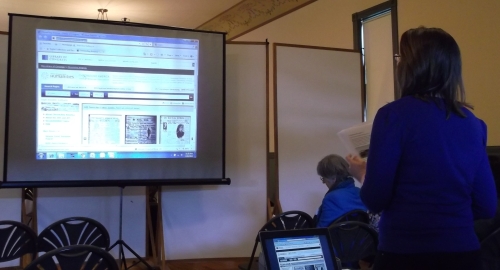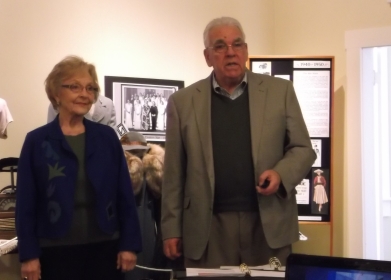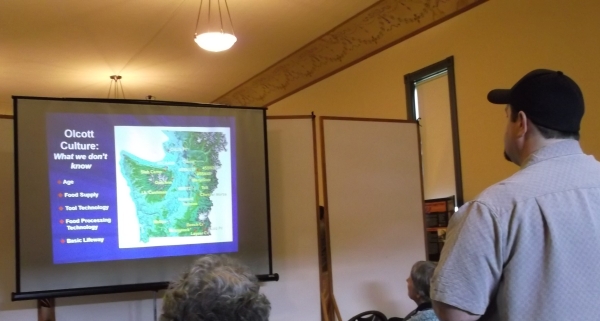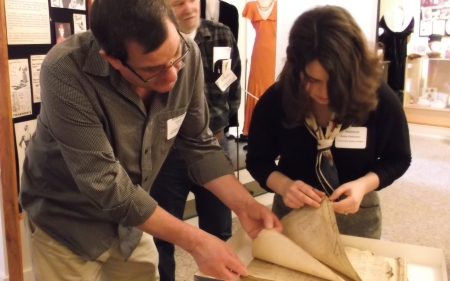If you missed our Heritage Day this year, here are few highlights of our programs. [Photos below taken and shared by Lita Sheldon]
We couldn’t get pictures of everyone but we would like to thank those pictured below (scroll down!) and:
Luncheon speaker Harriet Baskas who entertained us thoroughly with her program “Hidden Treasures in Washington’s Museumsâ€.Â
Thank you to her and to Sven Mogelgaard, “I Need A CTO†who helped us to avoid Getting Paid Without Getting Fleeced about the technology aspects of E-payments for non-profit heritage groups on managing small business payments and merchant management at events or over the internet.
Thanks also to Tina Dinzl-Pederson who taught us how to conduct a local history geocaching program to promote our museums and historic places. She can be found doing more of her programs at the Cama Beach State Park where she is the Interpretive Specialist at that historic park.
Thanks also to the Stanwood Area Historcial Society for hosting this wonderful event at their historic public hall – the Floyd Norgaard Cultural Center, which was well attended and provided a full day of heritage – related information for us to learn.

Mick (Michael Houser) and Nick (Nicholas Vann) from the Dept of Archaeology and Historic Preservation presented their common sense ways of preserving old buildings: being green, economical and true to the historic character of our historic buildings and well-designed architecture.
http://www.dahp.wa.gov/

Washington State Library Staff librarians Shawn Schollmeyer (and Evan Robb, not pictured) demonstrated how to find and access two major digitization projects that enable historians, genealogists and other researchers to find primary resources previously inaccessible: National Digital Newspaper Project & the Washington Rural Heritage Program.
http://www.sos.wa.gov/library/digcolls.aspx

Mari Ann Kind Jackson and Gordon Strand presented their program about the Nordic American Voices Oral History Initiative. They described the Nordic Heritage Museums recent efforts to collect, preserve, and share the life histories of Nordic immigrants and their descendants in the Pacific Northwest.
Nordic American Voices builds upon the expertise gained in the 1999–2000 Vanishing Generation Project, when 123 interviews were recorded by more than 40 volunteers. From the Nordic American Voices project they have been able to publish “Voices of Ballard and Beyond”
Now available for purchase in the Museum Gift Shop – see http://www.nordicmuseum.org/education.aspx.

Acorns? — A presentation on the Granite Falls Alternate Route project provided information on how cultural resources management works in the day to day world of National Historic Preservation Act Section 106 consultation and how a road construction project complies with regulatory requirements. Crilly Ritz from Snohomish County Public Works provided background on the Granite Falls Alternate Route project and the regulatory process and requirements that provided the framework for the archaeological data recovery that occurred as part of the project. Jason Cooper, (in picture) an archaeologist with the consulting firm AMEC, provided a presentation that summarized the extensive archaeological data recovery work that occurred as part of the project. Among the surprising findings of the project was that acorns were part of the diet of the Olcott period, approximately 7-9,000 years ago. His presentation provided an extensive discussion of the lithic tool analysis that occurred as part of the project.
- Emily Pellichero (center, of the Conservation Studio of Seattle) is examining a ledger brought by Kevin Stadler (left) from the Alderwood Manor collection to analyze how it can be preserved.
Emily presented her workshop on ways in which works of art and archival documents on paper can become damaged with time, as well as some techniques conservators employ to deal with these types of damage. http://www.conservationstudioseattle.com
